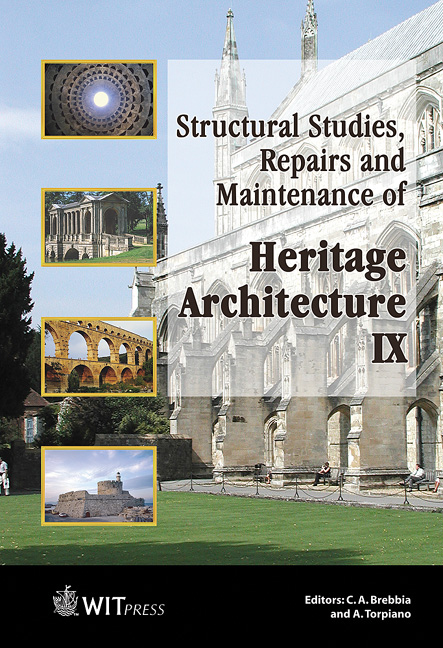Experimental And Numerical Study Of Multi-leaf Masonry Walls
Price
Free (open access)
Transaction
Volume
83
Pages
10
Published
2005
Size
1,383 kb
Paper DOI
10.2495/STR050321
Copyright
WIT Press
Author(s)
M. Ramalho, A. Taliercio, A. Anzani, L. Binda & E. Papa
Abstract
A research programme was carried out with the aim of investigating the mechanical behaviour of multiple-leaf stone masonry walls. A number of experimental tests were performed on three-leaf specimens, consisting of two external leaves made of stone bricks and mortar joints, and an internal leaf in mortar and stone aggregate. The specimens differed from each other in terms of interface geometry, stone nature, and loading conditions. A numerical model was developed to predict the nonlinear response of the specimens. The model is characterized by a damage tensor, which allows one to describe the damageinduced anisotropy accompanying the cracking process. Comparisons between the predicted and measured failure loads are quite satisfactory in most of the studied cases. The numerical procedure still needs to be improved to accurately describe the post-peak behaviour, by avoiding mesh-dependency effects related to the strain-softening behaviour of the material. Keywords: masonry, stone, mortar, damage, finite elements. 1 Introduction Multiple-leaf stone masonry walls are commonly encountered in Italy, in historical buildings dating back to the Roman times, the middle-ages (see fig. 1), or later times, up to the XIX century. An experimental research was carried out in the laboratory to better understand the mechanical response of this kind of structures, following some dramatic events which took place in seismic areas (Umbria and Marche earthquake in 1997; collapse of the Cathedral of Noto in 1996, after an earthquake in 1990). Most of the damaged historical buildings had
Keywords
masonry, stone, mortar, damage, finite elements.




